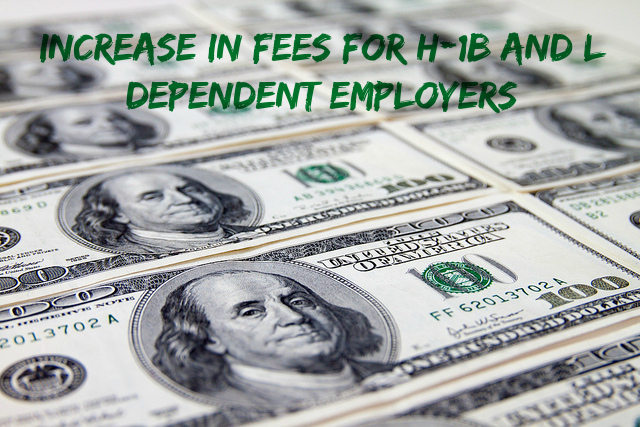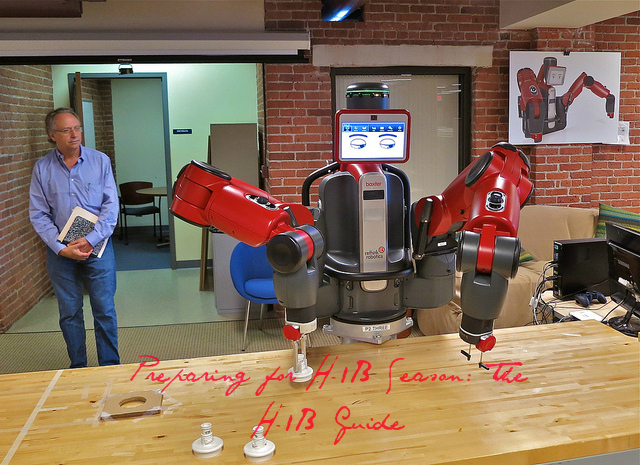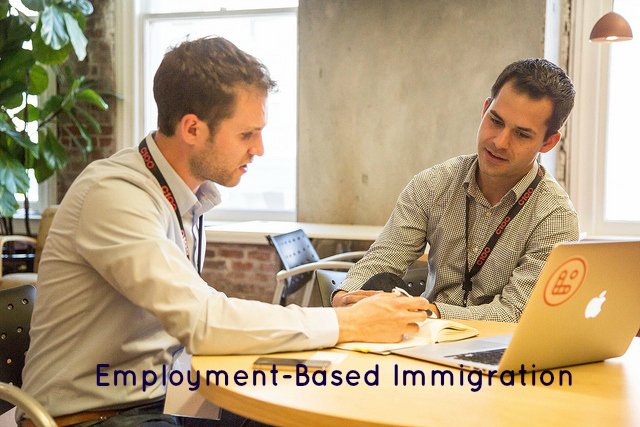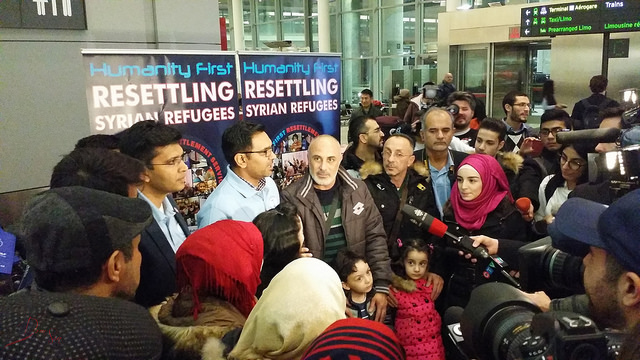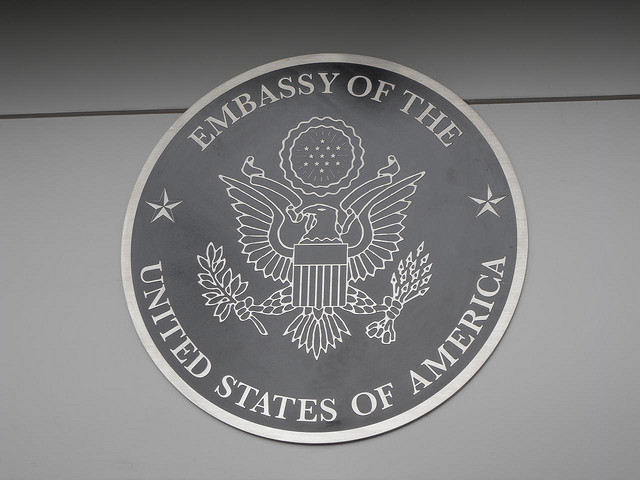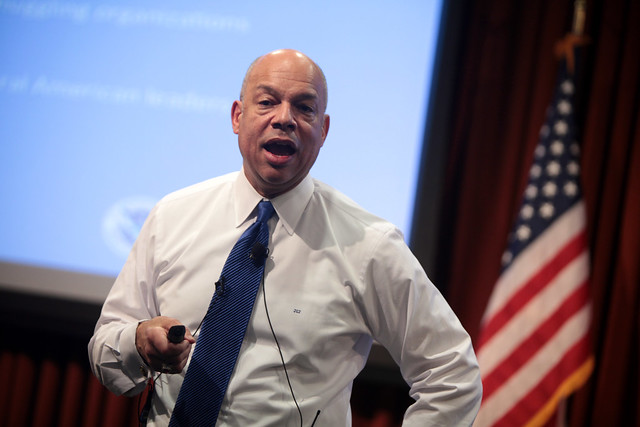Beginning February 19, 2016 certain nonimmigrant Caribbean residents seeking admission to the United States as H-2A agricultural workers, will be required to obtain a valid passport and valid H-2B visa in order to be admitted. Spouses and children traveling with an H-2A agricultural worker will also be required to present a valid passport and H-2A visa. The H-2A nonimmigrant visa exception for Caribbean residents was first introduced during World War II in an effort to address labor shortages in the American workforce. The change, comes as part of the revised 2016 Omnibus Appropriations Bill, which eliminates the nonimmigrant visa exception for these individuals, along with other provisions that impact the H-2B nonagricultural visa program. The new rule will apply to nationals of the United Kingdom, France, the Netherlands and nationals of Barbados, Grenada, Jamaica, Trinidad and Tobago, who either maintain a residence in a territory governed by England, France, or the Netherlands located in the adjacent islands of the Caribbean, or maintain a residence in Barbados, Grenada, Jamaica, or Trinidad and Tobago. The change was validated in yesterday’s Federal Register by the Department of State and Homeland Security respectively. Removal of this visa exemption will allow the Department of State to properly screen individuals prior to their arrival in the United States, and further protect agricultural workers from employment violations and work related abuse. To learn more about the H-2A visa program click here.
Articles Posted in Employment based visa
Filing Fees to Increase for Certain H-1B/L Dependent Employers
Beginning December 18, 2015, H-1B and L-1 filing fees will increase for H-1B/L-1 dependent employers, employing 50 or more employees, with more than 50% of those employees in H-1B or L nonimmigrant status. This increase in fees comes with the passage of the Consolidated Appropriations Act, 2016 recently signed into law by President Obama, to be enforced until September 30, 2025. The new fee will apply to initial and change of employment H-1B and L petitions filed on or after December 18, 2015. The additional fee will be $4,000 for H-1B petitions and $4,500 for L petitions. USCIS will be revising Form I-129 and I-129S to reflect the new law and the additional fee. Petitioner’s are advised to accurately complete Item Numbers 1d. and 1d1. of Section 1 of the H-1B Data Collection Supplement and Item Numbers 4a. and 4b. of the L Supplement. Failure to complete this information accurately and include the appropriate fee where necessary may result in the rejection of your petition beginning February 11, 2016. CIS reserves the right to issue a request for evidence to determine if the additional fee will apply. In these cases, the original filing date will be maintained as the date of receipt of the petition.
Other fees that may be included in the H-1B petition are as follows:
- I-129 processing fee $325;
Staff Spotlight: Paralegal Maya Elkain
 For this month’s staff spotlight, we invite you to learn more about Paralegal, Maya Elkain.
For this month’s staff spotlight, we invite you to learn more about Paralegal, Maya Elkain.
Ms. Elkain began her journey with the Law Offices of Jacob J. Sapochnick in 2014 as an intern. She quickly learned the ins and outs of employment based immigration law and was offered a position. Today, she assists attorneys with the preparation of H-1B applications, E-2 investor visas, L-1A visas, O visas, National Interest waivers, provisional waivers of unlawful presence, and much more. Ms. Elkain specializes in employment-based immigration and investor petitions. With her assistance, our law office has been able to receive affirmative decisions in numerous cases.
“The best part of my job is having the opportunity to make a difference and actually help our clients succeed in their immigration process. It is the most rewarding feeling.”
The H-1B Guide: Preparing for H-1B Season
What is the H-1B Visa? The H-1B visa is a work visa that is awarded on a lottery basis. The H-1B visa program allows American companies and/or qualifying organizations to employ foreign workers to fill specialty occupations temporarily. The foreign worker must posses a combination of education, specialized training, and/or experience that is equivalent to training acquired by the attainment of a U.S. bachelor’s or higher. The H-1B program was first enacted by Congress with the intention of helping American employers seek out distinguished foreign workers, possessing the skills and abilities necessary to perform the duties of the specialty occupation. The H-1B program has remained popular because it has allowed American employers to remain competitive and provides highly skilled foreign workers a path to permanent residence.
The provisions of the H-1B visa program allow qualified foreign workers to attain temporary employment having met specific requirements. H-1B visa recipients typically work in the STEM fields as scientists, engineers, computer programmers, software developers, business analysts, etc. although fashion models are also classified under the H-1B category.
USCIS will begin to accept H-1B cap-subject petitions for fiscal year 2017 beginning April 1, 2016. April 7, 2016 is the absolute deadline to file an H-1B cap-subject petition. Please note: employers cannot file an H-1B petition for an employee more than 6 months before the employee’s intended start date. If accepted, H-1B visa workers can begin employment by October 1st. The H-1B visa is issued for up to three years but may be extended for another three years.
The Upsides and Downsides to the Proposed Rule to Retain EB-1, EB-2, and EB-3 Immigrant Workers and Program Improvements Affecting Highly-Skilled Nonimmigrant Workers
On Thursday, December 31, 2015 the Department of Homeland Security published a new proposed rule affecting highly skilled immigrant and non-immigrant workers alike. The proposed rule, introduced in last week’s federal register, aims to improve the ability of American employers to hire and retain highly skilled workers waiting to receive their employment-based lawful permanent residence in the visa bulletin backlogs. Additionally, the proposed rule aims to enhance opportunities for such workers allowing them to be more easily promoted, to accept lateral positions with their current employers, change employers, and pursue other employment. While the proposed rule is not groundbreaking, it does address important challenges employers and their highly skilled workers have faced as the law stands today and makes recommendations for such relief. The proposed rule will be open for comment until February 29, 2016.
You may remember that on November 20, 2014 the President highlighted, as part of his executive actions on immigration, that the employment-based immigration system needed to be amended to modernize, improve, and clarify immigrant and nonimmigrant visa programs in order to create more jobs, foster innovation at home, retain a highly skilled workforce that would allow the United States to compete with other countries, and to stimulate the American economy overall. In order to modernize the employment based immigration system, USCIS would be required to work with the Department of State to modernize and simplify the immigrant visa allocation process. Part of this process would require the Department of State to make reasoned projections of employment-based immigrant visa availability on the visa bulletin, that could be relied upon by employers and their highly skilled workers.
Presently, immigrant workers from India and China are experiencing extraordinary delays in the employment-based queue for permanent residence, while other highly skilled workers are forced to wait over a five-year period to receive company sponsorship and lawful permanent residence. Furthermore, such workers are forced to remain on temporary employment-sponsored visas in the United States while waiting for an immigrant visa to become available to them. This puts the immigrant worker in a predicament giving the employer the upper hand, while restricting the employee from seeking advancement and discouraging new employment, since this would require the employer to file a new petition and incur the expensive fees required for filing. Highly skilled works facing extortionate delays in the visa backlogs have experienced hindered employer/employee career advancement and job mobility. The new rules will provide limited relief in this area.
What’s New In Immigration News?
District Court Denies Request for Temporary Restraining Order to Halt Syrian Re-Settlement Program in Texas
In their December suit, Texas Health and Human Services Commission V. United States, et, al., the state of Texas alleged that the United States government and the International Rescue Committee unlawfully attempted to re-settle six Syrian refugees in the city of Dallas without prior consultation and collaboration. According to Texas, the federal government failed to consult with the state regarding re-settlement of these refugees, and prevented them from receiving vital information relating to security risks posed by Syrian refugees prior to their re-settlement. Texas also claimed that the International Rescue Committee similarly failed to collaborate and consult with the Texas Health and Human Services Commission in advance prior to the re-settlement of these refugees. To protect itself, the state of Texas asked for an injunction and a temporary restraining order to halt the resettlement of Syrian refugees until security checks could confirm that these Syrian refugees do not pose a threat to the state of Texas.
On December 9, 2015 the U.S. district court denied the temporary restraining order, adding that the state of Texas failed to provide compelling evidence to suggest that Syrian refugees pose a substantial threat of irreparable injury to its citizens. Presiding district court Judge David C. Godbey added that, “the [Texas] commission has failed to show by competent evidence that any terrorists actually infiltrated the refugee program, much less that these particular refugees are terrorists’ intent on causing harm.” Although the lawsuit still stands and will likely not receive a final ruling until early next year, the district court set an important precedent in its denial of the temporary restraining order. Judge Godbey further maintained that it is not within the purview of the district court to assess what risk, if any, Syrian refugees pose to any particular state. Such risk can only be assessed by the federal government. On this issue Godbey stated that, “the Court has no institutional competency in assessing the risk posed by refugees. That is precisely the sort of question that is, as a general matter, committed to the discretion of the executive branch of the federal government, not to a district court.” The rest of the lawsuit remains in litigation.
Staff Spotlight: Katie Foley, Case Manager and Paralegal
It is our pleasure to introduce our readers to our esteemed Paralegal and Case Manager Katie Foley who has worked at the Law Offices of Jacob J. Sapochnick since 2010. Ms. Foley, originally from Santa Cruz, California holds a Bachelor’s Degree in Liberal Studies from Cal State East Bay and her paralegal certificate from San Diego Miramar College. Throughout her career, Katie Foley has assisted our attorneys with various different types of immigration petitions including family-based petitions, employment based petitions (H-1B, E-2 etc.), deferred action, marriage visas, I-751 petitions, fiancé visas, consular processing, naturalization, temporary visas (B-1/B-2, J-1, F-1 etc), deportation and removal cases. She has successfully processed hundreds of applications and in the process has formed long standing relationships with our clients. In her role as case manager, she assists our legal assistants with their case loads and provides direction as needed. Ms. Foley is an outstanding member of our firm for her impressive attention to detail, her understanding of the law, and the extensive guidance she provides our clients to ensure every case has a successful outcome. She provides all of our client’s strong personal support and comprehensive step-by-step instructions for each immigration process. If you are an international or out of state client, not to worry, Ms. Foley has perfected an easy online case processing system to assist clients with their immigration concerns no matter where they reside. In her free time, she enjoys lap swimming, barbecues, and gardening. To read more about Ms. Foley please click here.
For immigration questions please call our office. Your Immigration is our Passion.
Addition of Sixteen New Countries Eligible for the H-2A and H-2B programs
 This week USCIS and the Department of Homeland Security (DHS) announced the addition of sixteen new countries that will be eligible to participate in the H-2A and H-2B visa programs next year. Nationals from the following countries: Andorra, Belgium, Brunei, Colombia, Finland, France, Germany, Greece, Lichtenstein, Luxembourg, Malta, Monaco, San Marino, Singapore, Taiwan, and Timor-Leste will join sixty-eight other countries already participating in the H-2A and H-2B programs. Foreign nationals from these countries can apply for the H-2A and H-2B programs beginning January 18, 2016. If a country fails to meet the requirements for continued designation of these benefits, DHS reserves the right to remove any country from the list of eligibility, as it did recently with the country of Moldova and the H-2B program. Moldova may still continue to participate in the H-2A program since it has proven compliant with the necessary standards regulating the H-2A program. USCIS may consider other foreign nationals for the H-2A and H-2B programs even if their countries do not participate in these programs on a case by case basis.
This week USCIS and the Department of Homeland Security (DHS) announced the addition of sixteen new countries that will be eligible to participate in the H-2A and H-2B visa programs next year. Nationals from the following countries: Andorra, Belgium, Brunei, Colombia, Finland, France, Germany, Greece, Lichtenstein, Luxembourg, Malta, Monaco, San Marino, Singapore, Taiwan, and Timor-Leste will join sixty-eight other countries already participating in the H-2A and H-2B programs. Foreign nationals from these countries can apply for the H-2A and H-2B programs beginning January 18, 2016. If a country fails to meet the requirements for continued designation of these benefits, DHS reserves the right to remove any country from the list of eligibility, as it did recently with the country of Moldova and the H-2B program. Moldova may still continue to participate in the H-2A program since it has proven compliant with the necessary standards regulating the H-2A program. USCIS may consider other foreign nationals for the H-2A and H-2B programs even if their countries do not participate in these programs on a case by case basis.
December Visa Bulletin: Announcements and Projections EB-2 India, EB-2 and EB-3 China, F-2A, and F-2B
The December visa bulletin was recently released by the DOS on November 9, 2015. For the month of December CIS has announced that family based applicants must use the ‘date of filing’ chart to determine when their adjustment of status applications may be filed. This means that for family based preference categories, there are presently immigrant visas available and demand has not yet been met for the fiscal year. Employment based applicants must refer to the ‘final action date’ chart as a basis for applying for adjustment of status. This means that presently there is more demand than immigrant visas available for employment based categories. For the month of December, filing dates have remained unchanged. The impact of the dual chart system will not be felt until CIS requests visa numbers from the DOS in April 2016 for adjustment of status filings based on the October Visa Bulletin. In this post we will discuss new announcements that have appeared on the December visa bulletin and projections for EB-2 India, EB-2 and EB-3 China, F-2A, and F-2B. These projections are based on guidance provided by the Chief of the Visa Control and Reporting Division, Charles Oppenheim. While they do not guarantee actual immigrant visa availability, these projections are helpful reference points.
Replacement of Foreign Affairs Manual (FAM) and New Visa Waiting List
The December visa bulletin has announced that the Foreign Affairs Manual (FAM) used internally by the Department of States will be replaced with 9 FAM-e beginning November 18, 2015. Public release of the new FAM has not yet been announced.
Additionally, a ‘Visa Waiting List’ will be released beginning with the January Visa Bulletin which will provide applicants information on the National Visa Center waiting list starting November 1, 2015.
Visa Bulletin Fiasco: House Democrats Demand Action from DOS
On October 28, 2015 sixteen Democrats from the House of Representatives including —Zoe Lofgren, Michael M. Honda, Judy Chu, Katherine M. Clark, Elijah E. Cummings, Anna G. Eshoo, Tulsi Gabbard, Luis V. Gutierrez, James A. Himes, Ruben Hinojosa, Eddie B. Johnson, James P. McGovern, Frank Pallone Jr., Jared Polis, David E. Price, and Alma S. Adams — issued a letter addressed to the Secretary of Homeland Security, Jeh Johnson concerning drastic revisions made to the Visa Bulletin on September 25, 2015.
In the letter, House Democrats argue that the revisions to the Visa Bulletin have compromised the integrity of the immigrant visa process, and resulted in a lose of faith in our immigration system. More over they argue that these revisions have adversely impacted the lives of thousands of immigrants, the American businesses who employ highly skilled workers, and our economy which benefits from retaining highly skilled workers.
As previously reported, the Department of State had published a dual chart system on September 9, 2015 with the addition of a new ‘date of filing chart’ which first appeared on the October Visa Bulletin. This new ‘date of filing’ chart was implemented in an effort to modernize and streamline the immigration process, as part of President Obama’s executive actions on immigration reform.
 Visa Lawyer Blog
Visa Lawyer Blog



